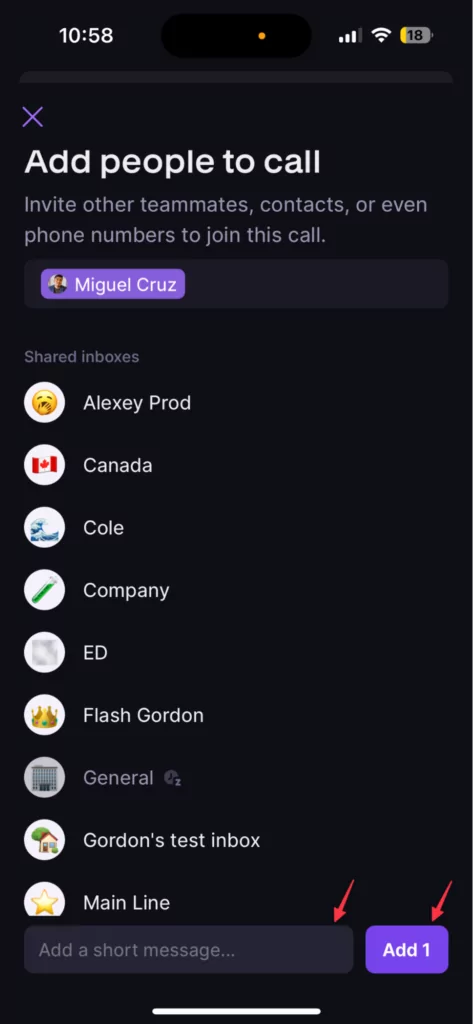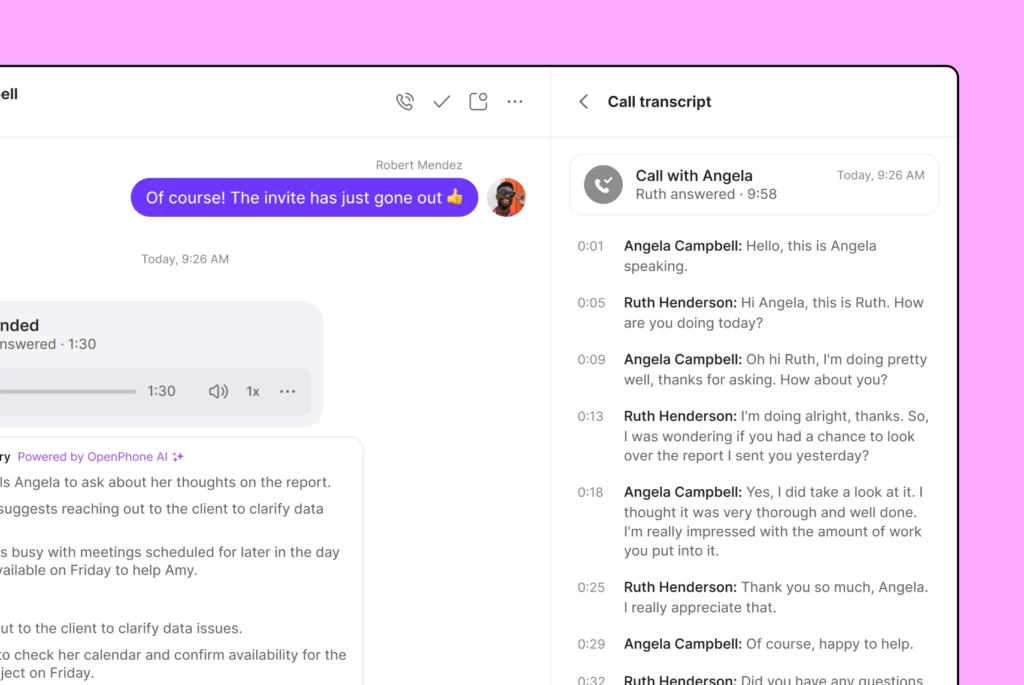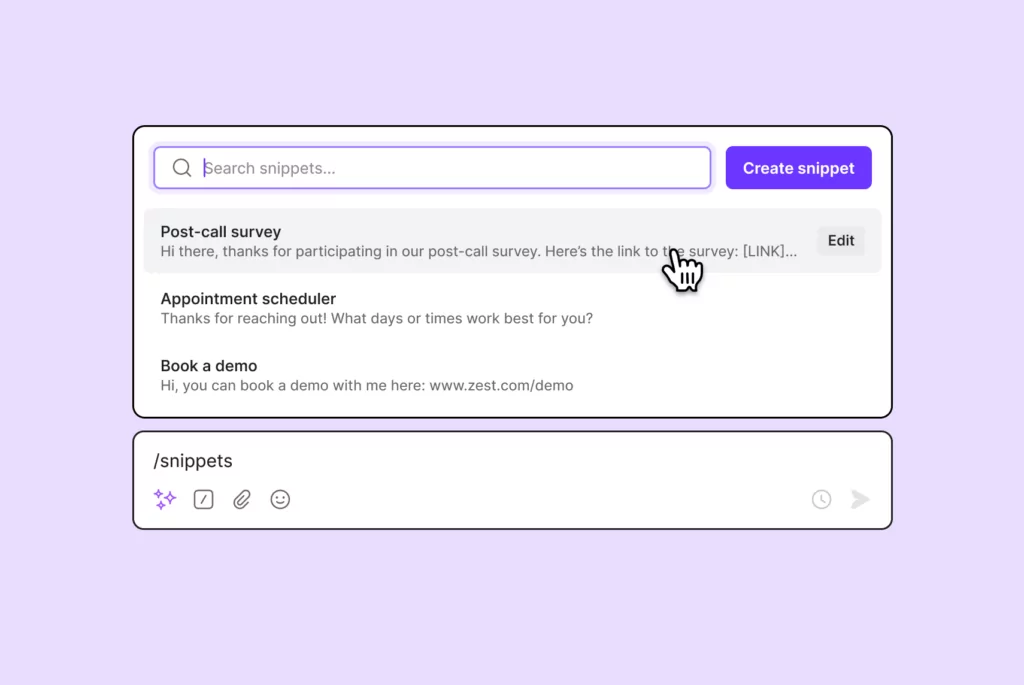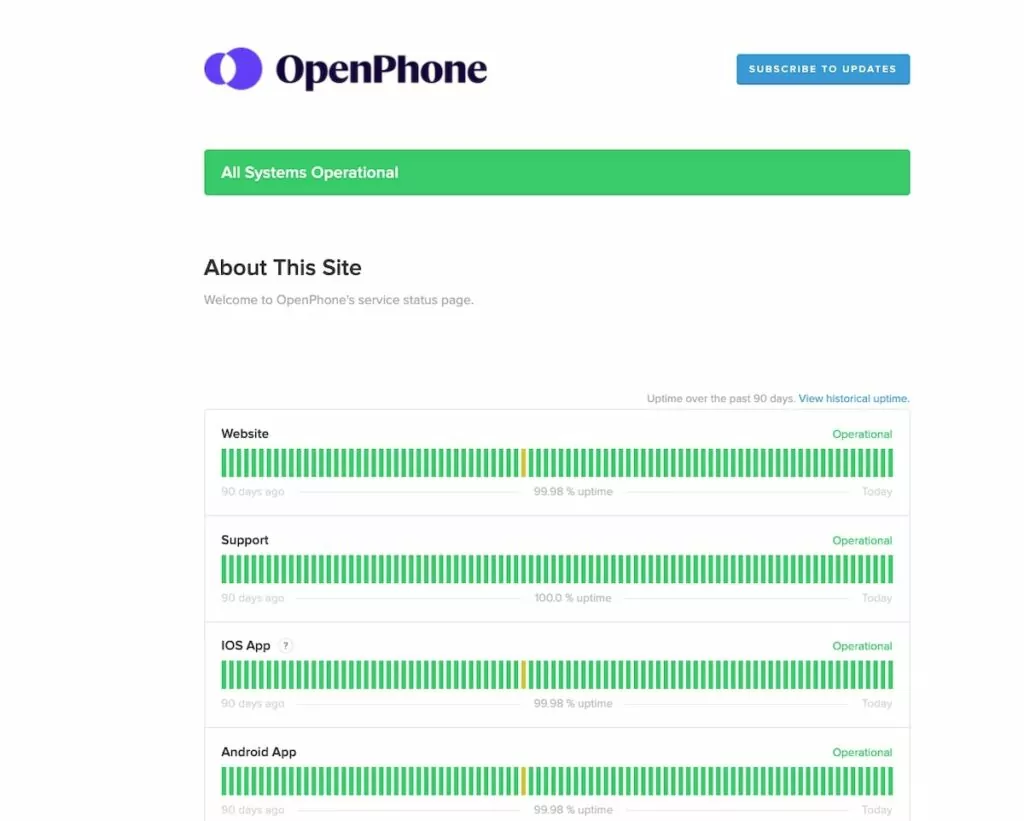What we all want when we call customer service: our questions to be handled quickly and efficiently.
What we usually end up with: interactions that disappoint us and make us feel frustrated.
Call quality is an essential part of customer service. How your reps handle support calls can dramatically influence customer loyalty and perception of your brand.
Yet, many companies miss the mark. They don’t focus enough on the quality of their support interactions. Or sometimes, calls have technical problems, such as fuzzy audio or connectivity issues, which also affect their call quality.
In this article, we’ll cover how you can address these issues and improve your call quality — whether you’re facing service or technical challenges (or both).
What exactly is call quality?
For customer service teams, call quality refers to how effectively customer service representatives handle customer interactions over the phone. When teams focus on improving their call quality, they can address customer issues with empathy and provide effective solutions.
Two major factors create poor call quality: service issues and technical issues.
Service issues
Poor customer service significantly affects call quality. Frustrated customers can become angry or distressed, making it harder to resolve issues and creating higher-stress situations. Customer service issues include:
- Poor call etiquette: Reps don’t greet customers or treat them politely.
- Lack of conversational skills: Reps don’t exhibit empathy or don’t maintain a professional tone.
Poor solutioning: Reps don’t provide accurate solutions or don’t communicate in a way that’s easy for customers to understand.
Technical issues
You can have exceptional customer service and still have low call quality if there are technical issues with your calls. Here are a few examples of technical issues that can crop up on support calls:
- Jitter: Choppy audio quality on calls
- Packet loss: Audio partially drops out during calls
- Latency: Delays in audio sent and received between customers and reps
Most technical issues stem from slow internet speeds or congested networks. If customers are frustrated enough, you may even see abandoned calls on your customer service line.
6 service upgrades to improve your call quality
If you want to improve your team’s call quality, you need to first assess their current performance — whether you’re managing one rep or dozens.
Here are a few ways you can get started:
1. Track rep performance with call monitoring tools
Tools or even template like call monitoring forms help you record and monitor the quality of service between support reps and your customers. And customers are used to hearing, “This call is being recorded for quality assurance and training purposes.” However, customer service call recordings are one thing. Listening back and finding patterns or issues with individual reps is another.
Maybe one of your reps excels at conversation but fails to provide detailed solutions, resulting in the customer’s problem not being properly addressed. Or perhaps another rep is great at identifying and solving problems but is abrupt with customers, leading to unnecessary call escalations. Call monitoring software can help you catch these call quality issues and identify areas of improvement for each rep.
You can create call quality standards and make them part of a rep’s KPIs. Ongoing call quality monitoring can ensure that reps improve and maintain consistent call quality over time.
2. Provide adequate training to reps
New customer service reps often don’t receive proper training before they start taking phone calls with customers. Companies tend to hire after the customer service team gets too busy, and then they’re desperate to add new team members to the mix.
However, skipping or shortening the onboarding process doesn’t serve your team or customers. Customers are disappointed when a rep can’t help them, and they’ll spend more time routing the issue to someone more experienced.
New customer service reps need a dedicated onboarding period with structured training. You can create training manuals to ensure consistency during this process. Training manuals also become a crucial reference for new reps to refer to as they learn your internal tools and expectations.
Justina Altiere, VP of Customer Experience at OpenPhone, recommends a “nesting period” during which new reps interact with customers in a supervised environment. A more experienced rep is available if the new rep needs assistance plus provides training and mentorship.
“Nesting periods help new reps put what they’ve learned into practice before they’re ready to ‘fly’ on their own,” says Justina. It helps them gain confidence in addressing customer service issues.
“Nesting periods help new reps put what they’ve learned into practice before they’re ready to ‘fly’ on their own.”
Justina Altiere, VP of CX at OpenPhone
3. Use call shadowing for 1:1 coaching
Call shadowing is the inverse of a nesting period. Instead of an experienced rep supporting a new rep while they handle live calls, a new rep “shadows” an experienced rep. The new rep silently attends service calls and observes how their peers or more seasoned team members manage customers and troubleshoot in real time. New reps can take advantage of these coaching sessions as a great learning opportunity to observe how experienced reps handle specific situations, such as de-escalating angry customers or maintaining professionalism.
With OpenPhone, you can use our group calling feature to have reps remotely listen in on customer calls while muted. Simply search for the team member’s name and click the “Add” button.

Check out our step-by-step process for implementing a call shadowing program.
4. Identify trends and provide retraining
As you review recorded calls, you might find issues that aren’t isolated to a single rep. Maybe a group of reps has picked up some bad habits (like setting the wrong expectations with customers), or some reps haven’t stayed current on internal workflows or quality standards. You may also notice that inefficiencies in your tech stack cause some issues, such as how quickly reps can open new tickets or search for related topics.
You can address some issues with processes and problem-solving by updating internal documentation or retraining your customer service reps. You might add new automation or upgrade your tech stack entirely if you find it to be a bottleneck that impacts call quality.
Pro Tip: If you find customers are asking the same questions, that’s an opportunity to create new resources, such as a knowledge base article or help center guide. Customer-facing content reduces your call volume and improves call quality.
5. Schedule call review sessions
A call review session is an opportunity to review recorded calls in either a one-on-one meeting or in a group setting. Share both the wins and the areas of improvement in these sessions. Have the team collectively identify the lessons from each call.
With OpenPhone, you can easily review call recordings from a shared inbox. When you find a specific coaching opportunity, make a note of the timestamp within our AI-powered call transcriptions. You can also highlight sections of the conversation and share them as learning opportunities with your team.

6. Collect instant customer feedback with post-call surveys
If you ask customers to complete a post-call survey, you can hear direct feedback about what’s going well and what needs to be improved with your call quality. Decide what information you want to collect — such as the rep’s product knowledge or communication skills — without asking the customer to spend too much time on a survey.
You don’t need a survey tool to send post-call surveys. You can start sending them out with snippets in OpenPhone. Snippets are message templates commonly used for text messages. If you type /snippet in the message box, you’ll see your team’s saved snippets.

Once a customer consents to the survey, you can send a snippet with a link to a Google Form to collect their survey responses. Be sure to avoid link shorteners (like bit.ly), as carriers will filter out those types of messages.
You can either send the snippet as a text message through OpenPhone directly, or you can add the customer’s name and phone number to a Google Sheet and use Zapier to automatically send out the text message with the survey link through OpenPhone. You can keep track of all surveys that have been sent out by first adding the customer’s name to a Google Sheet.
4 technical upgrades to your call quality
If you’re struggling with poor audio on your customer service calls, these four technical upgrades will improve your calls so your customers don’t have to ask, “Could you repeat that?” repeatedly.
1. Get a faster internet connection
If you’re using a Voice over Internet Protocol (VoIP) phone system, your phone calls are being transmitted over the internet. The faster your internet speed, the less likely you’ll have poor audio quality on your calls.
The Federal Communications Commission (FCC) has published a broadband speed guide recommending a minimum download speed of 0.5 megabytes per second (Mbps) for VoIP calls. That’s really low, and the bare minimum will likely result in distorted calls. Gigabytes per second (Gbps) is the measure for decent internet speeds, which is exponentially faster, and faster is always better for internet speed.
If you want a faster internet connection, opt for ethernet instead of WiFi. According to Spectrum, ethernet can provide speeds up to 10Gbps or greater, while WiFi currently tops out at 6.9Gbps.
Pro Tip: Check your internet speed with Speedtest.net.
2. Reduce your network congestion
A VoIP phone system means your customer service reps can work from anywhere with an internet connection, including their homes.
Having fast internet doesn’t matter if your rep’s roommate or partner is streaming Netflix in the next room. Your reps need to ensure that nothing is hogging their network bandwidth while they’re taking calls.
3. Upgrade your hardware
If your internet connection isn’t the issue and you’re still facing poor audio quality, it might be time to upgrade your reps’ hardware. For example:
- Minimum computer requirements: Machines should have a dual-core processor with a minimum speed of 2 GHz, at least 4 GB of RAM, and a full-duplex 16-bit sound card.
- Minimum cell phone requirements: iPhones should run iOS 13 or later, and Android phones should run Android 6.0 or later.
- Headset requirements: Choose a headset with a good microphone and reliable noise cancellation so your customers can hear you clearly.
4. Change your VoIP phone provider
Sometimes, the problem might not be your internet or your hardware… but your VoIP provider itself.
One way to determine if your provider is the issue is to check the uptime. For example, you can find OpenPhone’s status and uptime on a dedicated page, 24/7.

If you notice your provider has periods of downtime — or doesn’t publicly share uptime at all — it’s time to switch. The lack of a public status page indicates the provider isn’t confident in the product’s stability and reliability and isn’t willing to be held accountable.
Call quality technical upgrade checklist
Get the technical upgrades we shared in this checklist.
Why call quality matters for customer service teams
Even though you know call quality directly impacts customer satisfaction, making changes involves additional resources (such as a larger budget). In order to get approval, you may need to convince a leadership team or executive that the investment is worthwhile.
Here are some talking points you can use to support your case.
- Higher rep productivity: Your call quality directly impacts your average call length. If your customers struggle to hear you, it will take more time to understand their issues and resolve them, which, in turn, affects your rep’s productivity.
- More customer satisfaction: Customers who struggle to share their issues and get them resolved are more likely to get frustrated with you. They’re probably already dissatisfied and upset; poor call quality can easily cause them to grow even more dissatisfied. When you upgrade your call quality, you can de-escalate angry customers and increase their satisfaction with you.
- Build deeper customer relationships: With higher audio fidelity, your emotions can easily be conveyed to your customers. You can express empathy with customers better, which lays the foundation for deeper customer relationships through your support calls. You can also understand your customers better and assess the tone you need to take to resolve tense situations with tough customers.
Stellar call quality starts with the right phone provider
Poor call quality can easily sour a customer relationship, especially if they experience a problem the first time they call in. You never know when you’ll receive your first — or last — interaction with a customer on the support line, so you don’t want call quality to be a factor.
If you want to improve your call quality, examine all potential service and technical issues and determine how to resolve them. OpenPhone can help you overcome your call quality issues:
- AI call transcripts help you review calls quickly and share feedback with your team.
- Custom properties and contact notes help you record key details about your customers so you can reference them in your service calls.
- Internal threads give your team the ability to tag colleagues and gather internal support when they need it.
- Our Zapier integration helps you send your call data to your help desk so you can track support tickets easily.
Level up your call quality and deliver a superior call experience with OpenPhone. Sign up for a seven-day free trial today.
